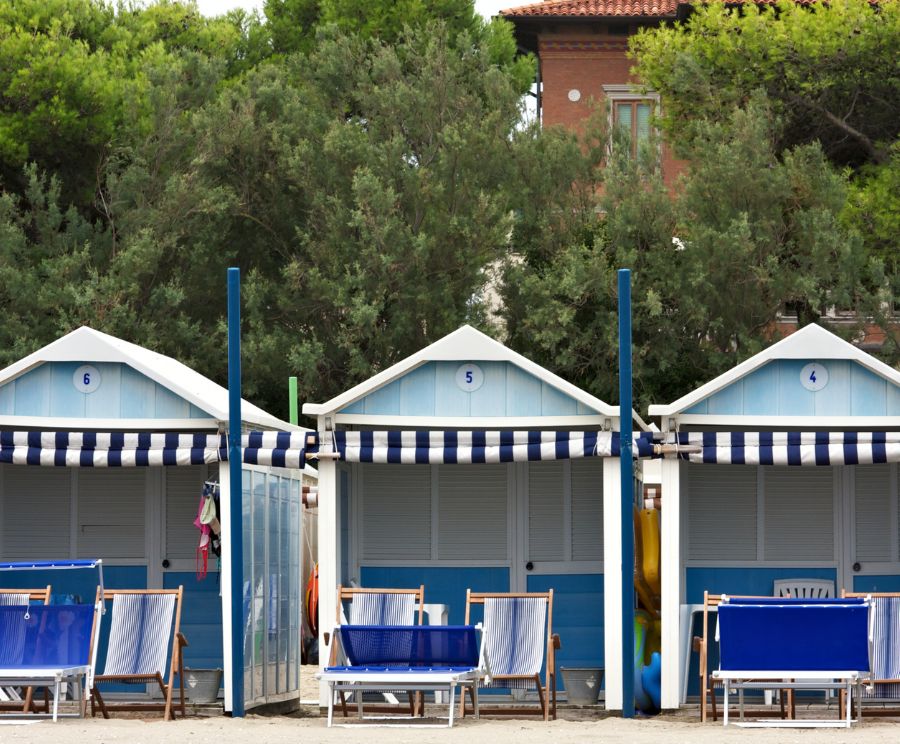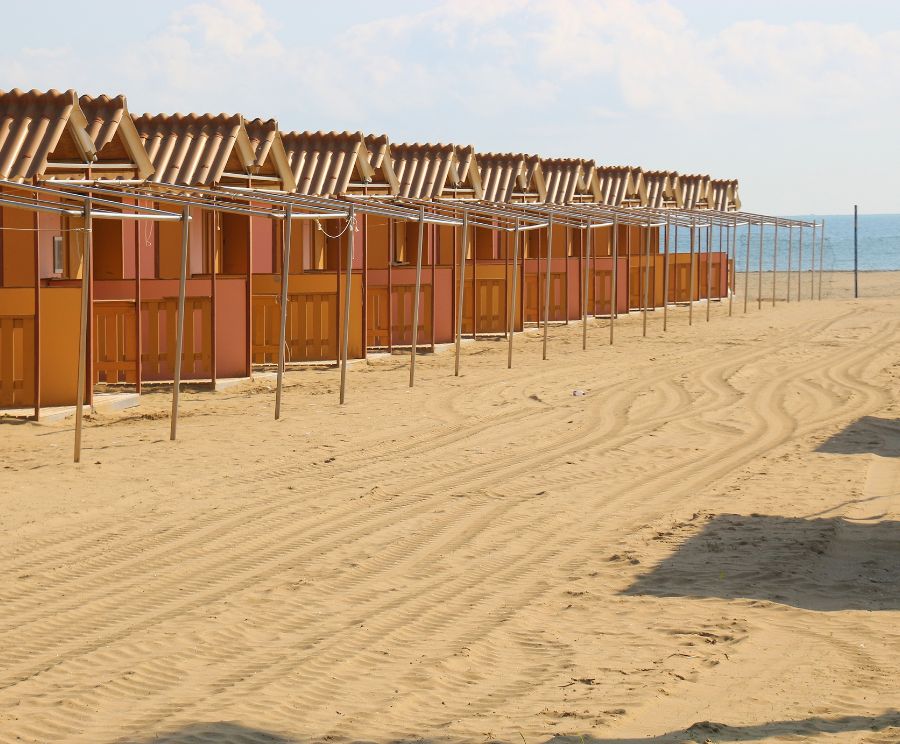A STORY OF VENETIAN SUMMERS
The timeless legacy of the Capannine at the Venice Lido
The iconic Capannine, along the shores of Venice Lido, represent a tradition that has enchanted generations of visitors: adorned with colourful facades and picturesque decorations, they embody the essence of Venetian summers, and offer a glimpse into a bygone era of leisure and elegance.
In the summer of 1856, against the austere backdrop of Austrian rule and the military fortifications of the Lido, Giovanni Busetto, affectionately known as ‘Fisola‘, envisioned these wooden cabins as a response to the growing demand for seaside recreation. Inspired by the sight of foreign tourists enjoying a peculiar structure, labelled ‘trabacca per uso di Bagni Marini’, Busetto recognised the opportunity for a new venture: he partnered with Margherita Canzich Valdevit, known as the mother of Lido huts, exchanging the rights to the land for the management of her trattoria.
Together, they transformed the initial ‘trabacca’ into a lively establishment offering bathing services, culinary delights and evening entertainment.

Under Busetto’s leadership, the capannine were transformed into sophisticated establishments, where bathers enjoyed tented accommodation, gourmet cuisine and evening entertainment. Busetto’s business expanded with the introduction of steamboat services connecting San Marco to the Lido, satisfying the growing demand for leisure trips.
However, the rise of the capannino faced challenges, until control was ceded to the Società dei Bagni, marking a new chapter in the history of the Lido.
Beyond their humble origins, the capannine became symbols of Venetian identity and culture. Famous personalities such as Thomas Mann, Gabriele D’Annunzio and Sergei Diaghilev frequented these huts, attracted by the allure of the Lido’s unique atmosphere.
Today, the legacy of the capannine continues to be a cherished tradition for Venetians, a symbol of the city’s identity.






